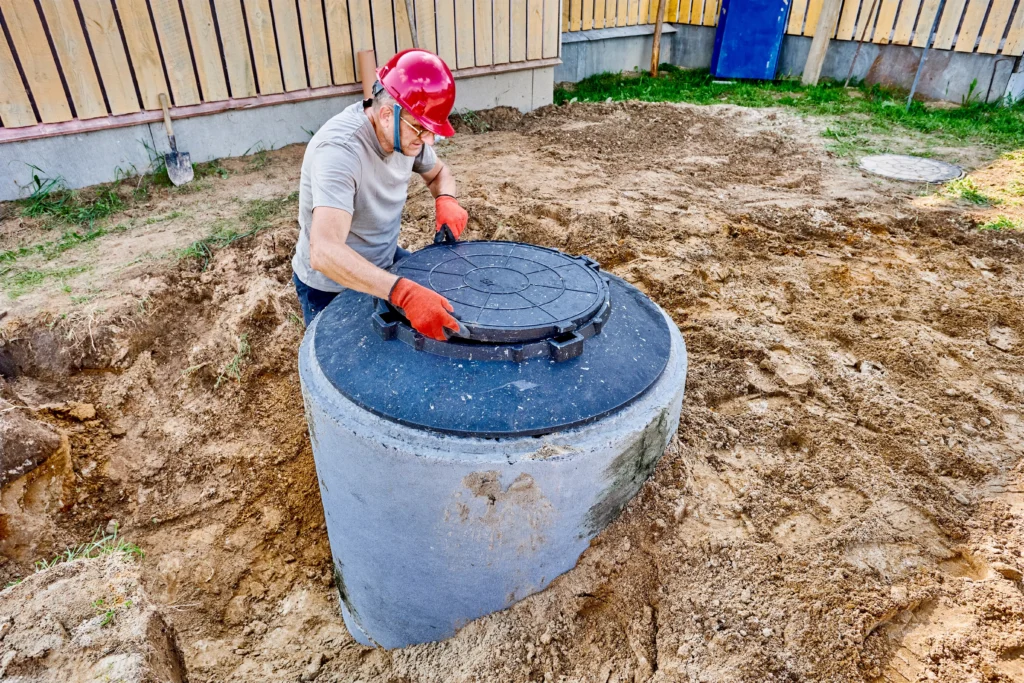A properly functioning septic system is vital to the health of your home, your property, and the environment around you. When your septic tank becomes full, it can lead to serious problems—from slow drains and backups to costly repairs and potential contamination. Recognizing the signs early is essential. Below, we’ve outlined the 5 most common and critical signs your septic tank is full and needs to be serviced immediately.
1. Slow Drains Throughout the House
One of the earliest indicators of a full septic tank is slow-draining sinks, showers, bathtubs, and toilets. If you notice that water is taking longer than usual to empty, especially across multiple fixtures, it’s likely a sign that your system is struggling to process wastewater.
This occurs because excess solid waste and sludge have filled the tank, leaving less space for new wastewater to settle. As a result, water flow slows down significantly throughout your home. While a single clogged drain can be isolated, slow drains across the house point to a larger septic issue.
Key warning signs include:
- Gurgling sounds in drains
- Standing water in sinks or tubs
- Inconsistent toilet flush performance
- Water backing up during washing machine cycles
Ignoring these symptoms allows the problem to worsen and can lead to a full backup of your system.
2. Sewage Odors in or Around Your Home
When your septic tank is nearing capacity, gases that are typically contained within the system can start to escape through drains, vents, or the surrounding ground. These unpleasant odors are not just inconvenient—they’re a clear warning that your system is overwhelmed.
Common odor locations include:
- Kitchen or bathroom sinks
- Shower and tub drains
- The area surrounding your septic tank or drain field
- Basement floor drains
These smells are caused by gases such as hydrogen sulfide and methane, which result from the natural breakdown of waste inside your tank. If you’re detecting a rotten egg or sewage-like smell, it’s time to schedule a professional inspection immediately.
3. Pooling Water in the Yard
Water pooling above or around your drain field is often the result of a tank that has reached capacity and is pushing excess liquid to the surface. This untreated wastewater, called effluent, should remain underground and be absorbed by the soil in the drain field. However, when the system becomes saturated, it overflows.
Signs of pooling include:
- Puddles forming in the grass with no rain
- Areas of unusually lush, green grass
- Soft, soggy spots underfoot
- Muddy patches near the tank or field lines
This can indicate not only a full tank but also possible drain field failure, especially if left unchecked. The presence of effluent above ground poses serious health risks and should be addressed immediately by a licensed septic professional.
4. Sewage Backup Inside the Home
A sewage backup is the most urgent and obvious sign that your septic tank is beyond full. If raw sewage starts backing up into toilets, bathtubs, showers, or floor drains, you are facing a serious system failure.
Backup may start gradually—such as gurgling sounds in plumbing—or come on suddenly after a large water usage event. In either case, this is not a do-it-yourself situation. You must:
- Stop using all water immediately
- Contact a professional septic company
- Avoid direct contact with sewage, as it poses health hazards
Sewage backups often result in biohazard cleanup, property damage, and environmental contamination if not resolved quickly. Regular pumping is the best way to prevent this type of catastrophic failure.
5. It’s Been More Than 3–5 Years Since Your Last Pumping
Even if your system is showing no visible signs of trouble, going more than three to five years without pumping your septic tank puts you at significant risk. Most septic tanks need to be pumped on a regular schedule depending on:
- Tank size
- Number of people in the household
- Water usage habits
- Solid waste input (use of garbage disposals, for example)
Ignoring routine maintenance allows solid sludge to accumulate, reducing the tank’s capacity and pushing solids into the drain field where they can cause irreversible damage.
A well-maintained septic system should never get to the point of backup. If you can’t remember the last time your tank was pumped, it’s time to book service.
Additional Symptoms to Watch For
While the above signs are the most common, there are other symptoms that may indicate a problem with your septic system, including:
- Toilets frequently running or bubbling after flushing
- Water coming up in tubs after running sinks or washing machines
- An increase in pests or flies near the tank or drain field
- Discoloration of grass over the septic system area
These may signal that your system is nearing failure, especially if paired with signs of age, poor maintenance, or overuse.
What to Do if You Notice These Signs
If you’re seeing one or more of these warning signs, don’t wait for the situation to escalate. Take these steps immediately:
- Stop using water in the home to prevent overflow.
- Call a licensed septic professional to inspect and pump the tank.
- Avoid digging or disturbing the drain field, which can worsen the problem.
- Keep pets and children away from areas with visible waste or standing water.
Prompt action can often prevent system failure, protect your home, and reduce repair costs significantly.
How to Prevent a Full Septic Tank
To avoid reaching a crisis point, homeowners should follow a consistent septic maintenance plan that includes:
- Regular pumping every 3–5 years
- Annual system inspections
- Avoiding harsh chemicals and non-biodegradable materials
- Minimizing water usage and staggering laundry loads
- Monitoring for early warning signs
Proactive care will ensure that your system works properly for decades, saves you money, and prevents damage to your property and the environment.
Pay Attention Before It’s Too Late
Your septic system is a vital part of your home, but it’s also one of the easiest systems to forget—until something goes wrong. By recognizing the signs of a full septic tank and addressing them early, you can avoid costly repairs, protect your health, and extend the life of your system.
Don’t wait for sewage to back up into your home to take action. If you’ve noticed any of these warning signs or it’s been years since your last pumping, now is the time to schedule a professional service.
#FullSepticTank #SepticWarningSigns #SepticMaintenance #PreventSepticBackups #SepticTankCare

